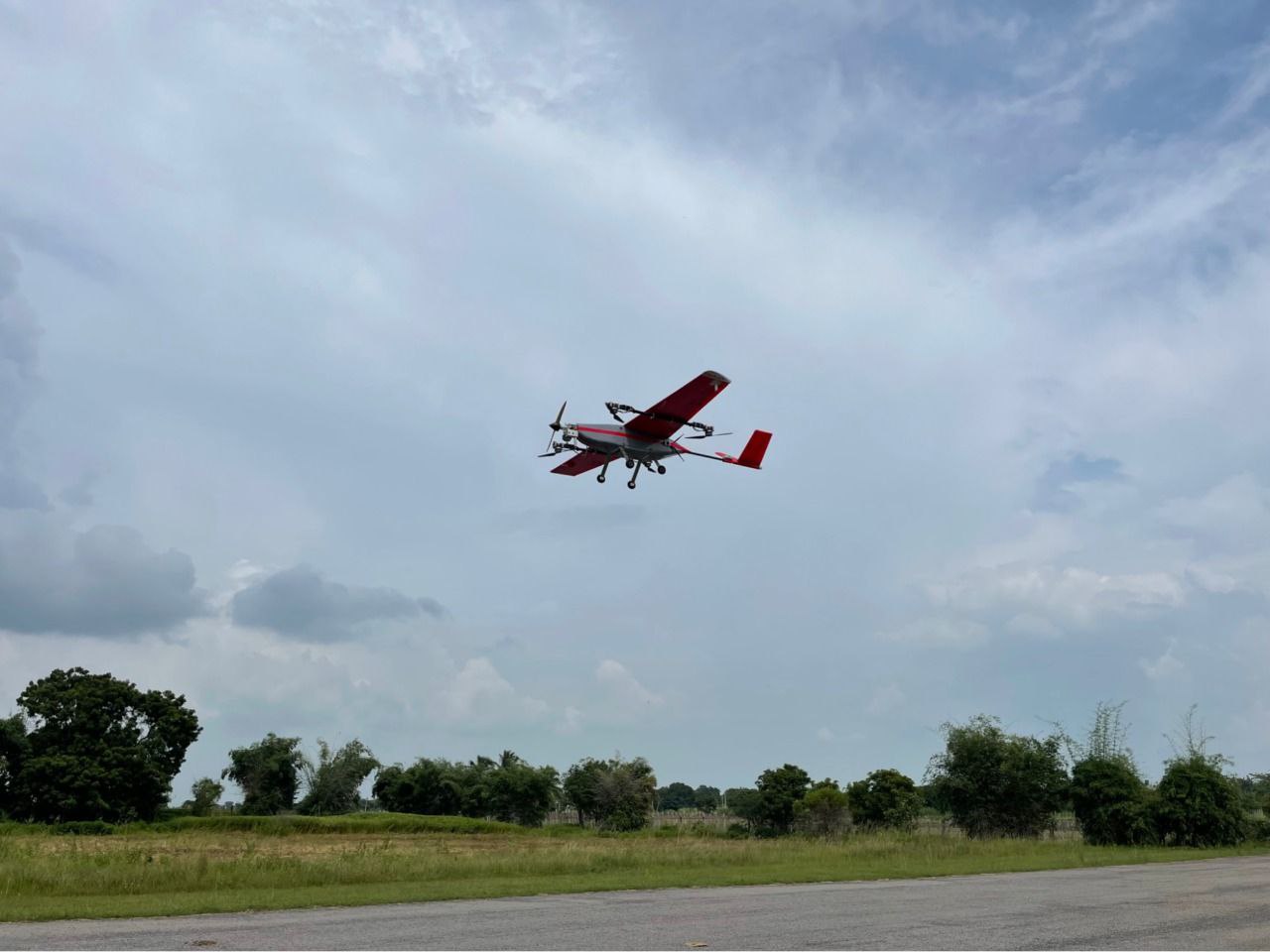Hyderabad: T-Works, the Telangana government’s prototyping centre for electronics, electromechanical and mechanical start-ups, on Thursday announced that it successfully designed, developed, and tested its indigenous vertical take-off and landing autonomous unmanned aerial vehicle (UAV). The UAV can supposedly cover 45 kilometres in 33 minutes.
Called the Airborne Medical Rapid Transport (AMRT25), it has a 2.5 metre wingspan, and is a hybrid UAV. It can launch and land vertically like a conventional drone and then fly forward like a conventional winged aircraft as well, said a press release from T-Works on Thursday. The AMRT25’s next version will cover 100 kilograms with a payload of 3.5 kgs, it added.
The new machine will likely be used by the state government for various services. In September, the Telangana government had begun using drones to deliver medicines and vaccines for COVID-19 patients at Vikarabad.
Apart from medical supplies delivery, the AMRT25 UAV can be used for surveying, inspection, defence applications, surveillance, and as a testbed for experimental payloads, said a press release from state IT minister K. T. Rama Rao’s office on Thursday.
“It completed over 30 tst flights over the course of a week passing various parameters such as maximum range, endurance, waypoint navigation, and return-to-launch capabilities,” it added.
Creating this new UAV has put T-Works among the few organisations in India at present that can design, fabricate, integrate, and operate long range VTOL hybrid drones, stated the release. The airframe and its components were designed and fabricated by T-Works, using software design tools, 3D printing, laser cutting, and CNC routing machines currently available at the Phase-0 facility in Begumpet, Hyderabad.
The VTOL motors of the AMRT25 are powered by a 10,000mAh battery and forward flight is powered by a 30cc gasoline engine. A winged aircraft consumes up to 75% less power than a conventional multi-rotor since the wings help produce the additional buoyant force.
The tools used for designing and constructing the UAV are also now available for the community to use and build UAV airframes or any other prototypes. Users can visit proto.tworks.in for instant quotations, design support and deliver-to-home options. Over 150 parts have been fabricated and delivered through the platform already.
Sujai Karampuri, CEO of T-Works, said “For short flights and limited range, commonly available drones called multi-rotors are well suited to do jobs such as food delivery, photography, and videography. The best battery powered multi-rotors in the world are limited to a 40km range while the most common and affordable ones are limited to around 20-25km after which the battery must be recharged or replaced. For wider applications and to cover longer distances, say over 100km, with speed, we must break this range barrier.”







